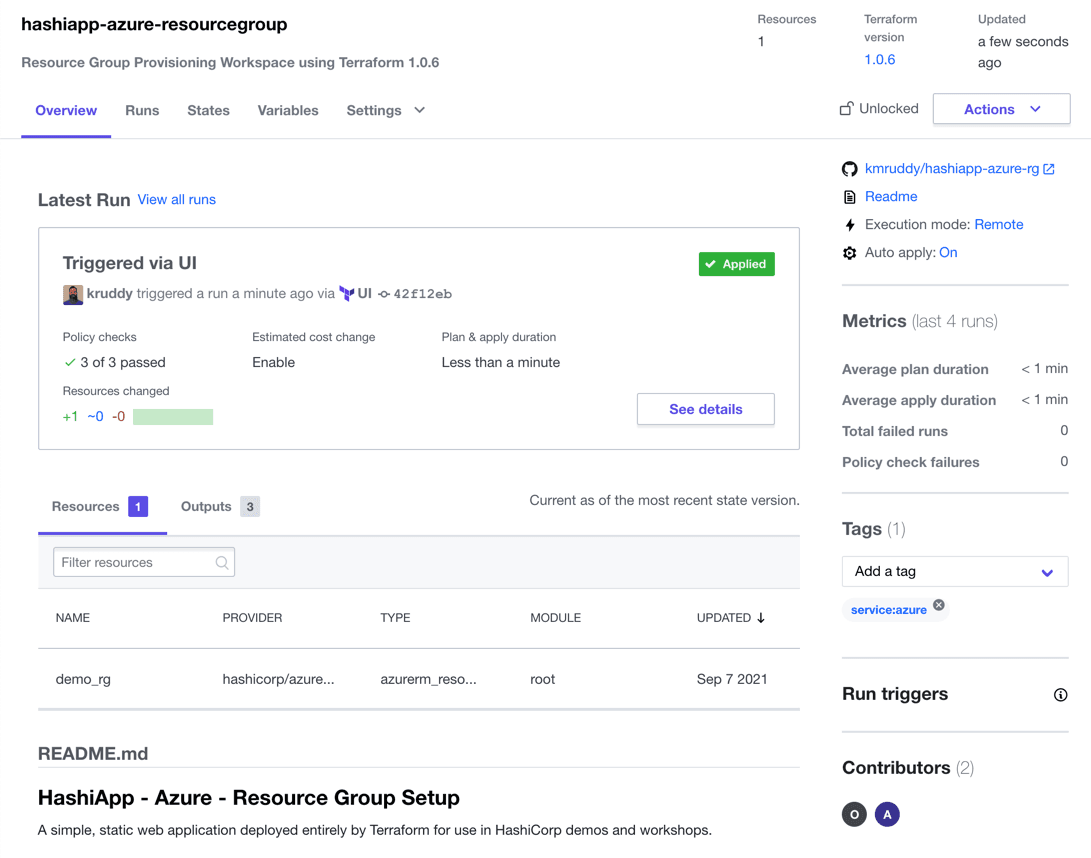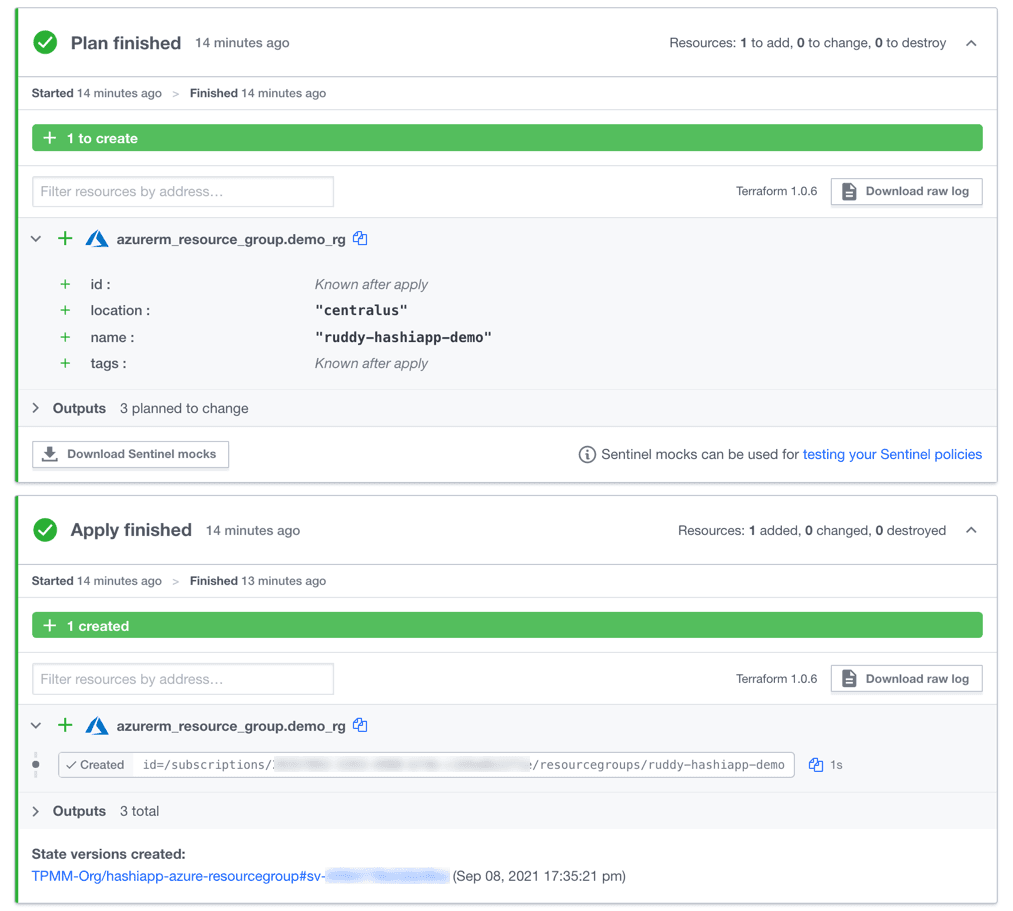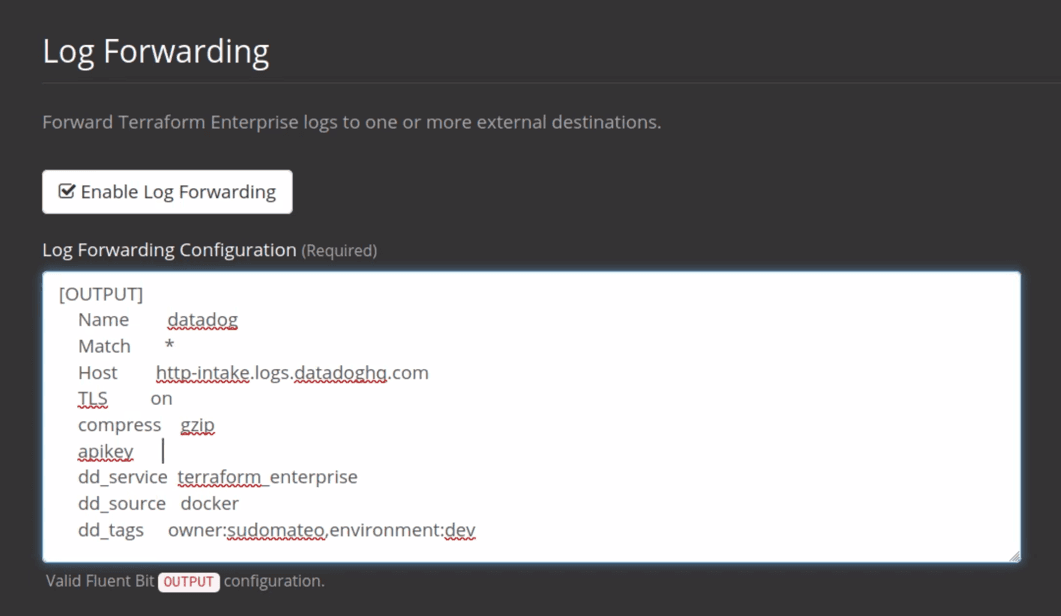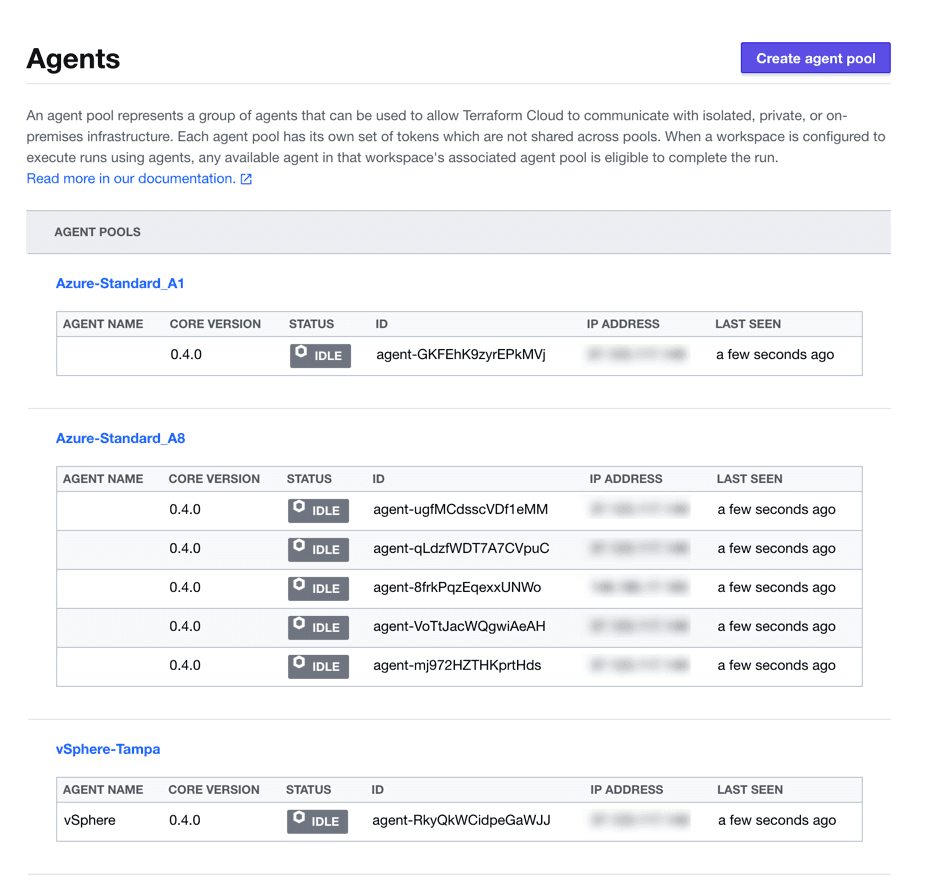Operational visibility and accessibility are becoming even more critical to businesses as they grow their use of managed resources and consume more services. The ability to understand what’s happening in your infrastructure — and when — is now a requirement for all organizations. To help address those needs, the v202109-1 release of HashiCorp Terraform Enterprise adds new features to:
- Enhance contextual awareness of both the workspace and managed resources
- Raise awareness of the entire deployment by supporting consistent log management
- Increase the ability to run your Terraform workflows anywhere with Terraform Agents
»Workspace Overview
Terraform Enterprise has added a new “Overview” page to each workspace that provides immediate access to the workspace’s most relevant information. The central column of the overview page shows information about the latest run and any available outputs, and it renders the README from the associated version control system (VCS) repository. The right column also displays up to four areas focused on the workspace’s configuration, run triggers information, key performance indicator metrics, and accessibility from a team level.

»Structured Run Output
Improved workspace visibility continues beyond the overview page. Terraform Enterprise has added a feature called structured run output to provide a more visually appealing representation of output during each Terraform workflow. Instead of console-type output, the plan and apply phases now show a color-coded, object-based representation of each resource under management. This increases the operator’s ability to tell exactly which resources have been modified and in what manner.
Structured run output is enabled by default and is compatible with Terraform 0.15.3 and newer. If you prefer the console-style output, converting a workspace is as simple as switching the “User Interface” option to “Console UI” in a workspace’s settings.

»Log Forwarding
Terraform Enterprise increases observability by adding log-forwarding capabilities. This new feature enables you to use a valid Fluent Bit configuration to ingest and deliver logs to one or more destinations. Furthermore, you can configure forwarding for for all logs, including application and audit logs. Using Fluent Bit makes available a wide array of log destination options, including Amazon CloudWatch, Azure Log Analytics, Datadog, and Splunk Enterprise.

More information on setting up and configuring log forwarding is available in our documentation.
»Terraform Agents
Finally, Terraform Enterprise adds a new level of flexibility to where Terraform workflows can be performed. Terraform Agents let you continue using the consistent control plane of Terraform Enterprise in private or otherwise segmented networks without requiring you to modify ingress firewall rules. You can also customize the agents to use specific tooling, credentials, or performance profiles according to their designated workspaces.
Workspaces consume agents through the construct of an agent pool. Agent pools can consist of one or many deployed agents, continuously checking back to Terraform Enterprise for work that may need to be performed. Administration-level settings are available to modify the minimum polling interval and disable agents site-wide.

More information on using Terraform Agents is available in the Introduction to Terraform Cloud Agents blog post. Information specific to Terraform Enterprise can be found in our documentation.
For more information about this release of Terraform Enterprise, visit the release notes. For more details on Terraform Enterprise or to get started, visit the Terraform product page or contact HashiCorp Sales.







